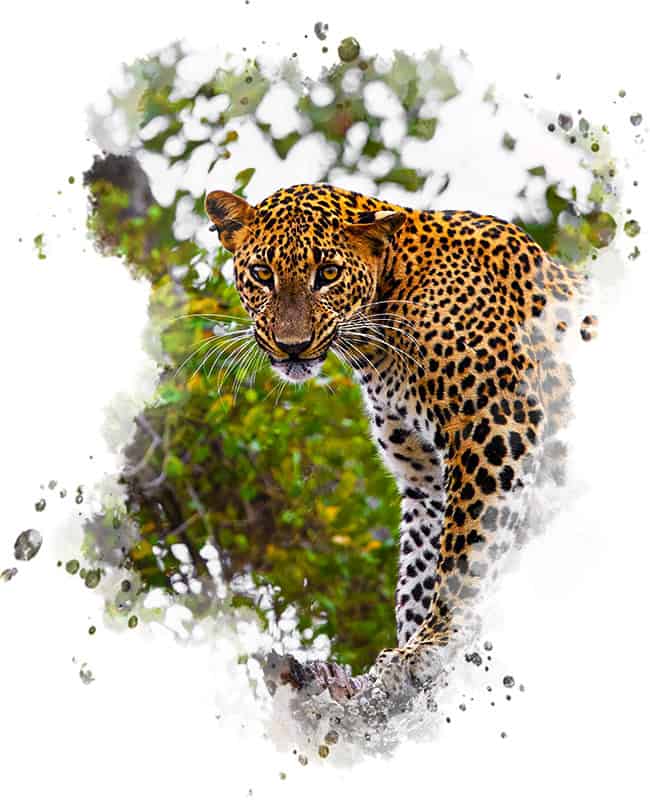
Yala, Sri Lanka
Things to do, weather & itineraries
The southeast of Sri Lanka is home to the wilderness of Yala, where a national park of the same name boasts the highest density of leopards in the world. Tucked away in Yala’s overgrown forests and thickets are a few attractions that combine adventures in the wild with visits to nearby shrines, making this region one of the must-sees when touring the isle.
Among its main attractions, the Yala National Park is touted as a haven for wildlife, promising animal sightings amid the country’s most spectacular landscapes. Its other activities include a visit to the Kataragama Temple to witness how devotees of different faiths gather to worship the gods, as well as a hike to the Situlpawwa Rock Temple, where the only sounds atop a rocky outcrop are birdsong and the chanting of Buddhist monks.
The average daytime temperatures in Yala range from 24°C to 30°C (75.2°F to 86°F), making it one of the island’s hotter destinations. Most travellers tour the region between mid-December and mid-April, as well as the months of July and August for the best weather without heavy rainfall.
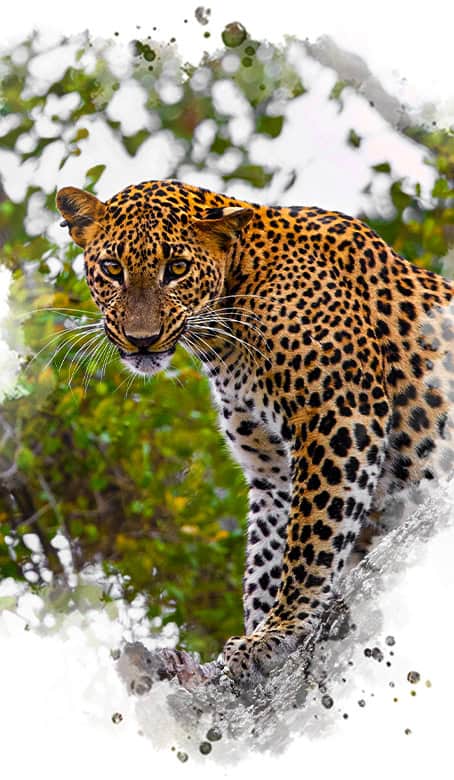
Yala, Sri Lanka
Things to do, weather & itineraries
The southeast of Sri Lanka is home to the wilderness of Yala, where a national park of the same name boasts the highest density of leopards in the world. Tucked away in Yala’s overgrown forests and thickets are a few attractions that combine adventures in the wild with visits to nearby shrines, making this region one of the must-sees when touring the isle.
Among its main attractions, the Yala National Park is touted as a haven for wildlife, promising animal sightings amid the country’s most spectacular landscapes. Its other activities include a visit to the Kataragama Temple to witness how devotees of different faiths gather to worship the gods, as well as a hike to the Situlpawwa Rock Temple, where the only sounds atop a rocky outcrop are birdsong and the chanting of Buddhist monks.
The average daytime temperatures in Yala range from 24°C to 30°C (75.2°F to 86°F), making it one of the island’s hotter destinations. Most travellers tour the region between mid-December and mid-April, as well as the months of July and August for the best weather without heavy rainfall.
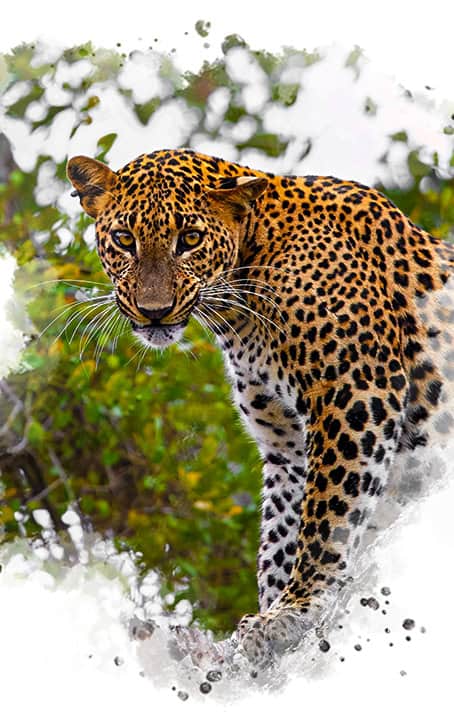
Yala, Sri Lanka
Things to do, weather & itineraries
The southeast of Sri Lanka is home to the wilderness of Yala, where a national park of the same name boasts the highest density of leopards in the world. Tucked away in Yala’s overgrown forests and thickets are a few attractions that combine adventures in the wild with visits to nearby shrines, making this region one of the must-sees when touring the isle.
Among its main attractions, the Yala National Park is touted as a haven for wildlife, promising animal sightings amid the country’s most spectacular landscapes. Its other activities include a visit to the Kataragama Temple to witness how devotees of different faiths gather to worship the gods, as well as a hike to the Situlpawwa Rock Temple, where the only sounds atop a rocky outcrop are birdsong and the chanting of Buddhist monks.
The average daytime temperatures in Yala range from 24°C to 30°C (75.2°F to 86°F), making it one of the island’s hotter destinations. Most travellers tour the region between mid-December and mid-April, as well as the months of July and August for the best weather without heavy rainfall.
Tour itineraries featuring Yala
As mentioned before, the main excursions that you can enjoy during your visit to Yala are the Yala National Park, the Kataragama Devalaya, and the Situlpawwa Rock Temple. For some guidance on how you may fit Yala into your tour of Sri Lanka, please refer to the sample itineraries below.
Tour itineraries featuring Yala
As mentioned before, the main excursions that you can enjoy during your visit to Yala are the Yala National Park, the Kataragama Devalaya, and the Situlpawwa Rock Temple. For some guidance on how you may fit Yala into your tour of Sri Lanka, please refer to the sample itineraries below.
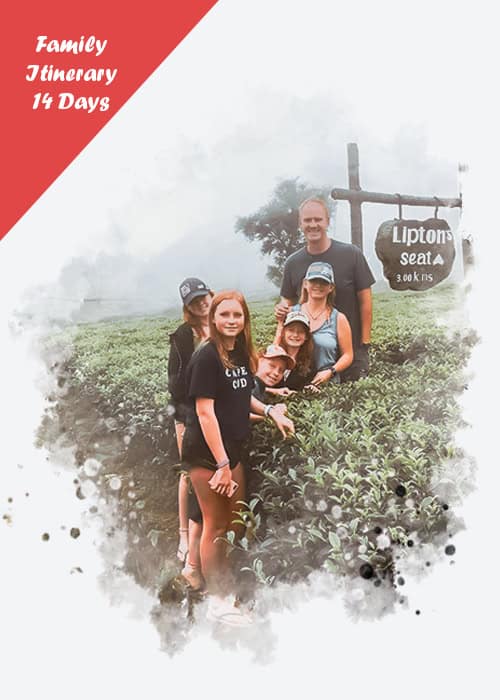
SL & Maldives Family
A perfect family adventure in the picturesque Sri Lanka combined with the pristine beaches of luxurious Maldives.
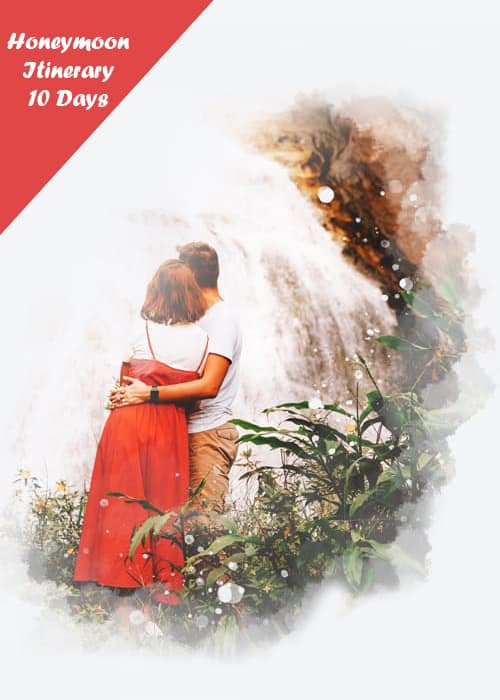
Luxury Honeymoon
Celebrate your love with a fabulous honeymoon in Sri Lanka. It is the best way to begin a new chapter in your life.

Family Adventure
Discover the off the beaten path of Sri Lanka with your children. Perfect for families that love nature, wildlife and adventure.
Request a Free Quotation
Would you like to get our assistance to organize your Sri Lanka holiday? Drop us a message to get a tailor-made Sri Lanka holiday package that reflects your interests, budget, tour duration and the weather conditions of the month that you visit Sri Lanka.
Things to do in Yala

At the forefront of the region’s attractions is the Yala National Park—a terrain of grasslands, marshes and forests that gets its fame from sheltering the highest density of leopards in the world. Composed of five blocks, the park extends across 130,000 hectares of land, making it the second-largest of its kind on the isle, and the wealth of wildlife that can be spotted inside has cemented Yala’s status as an essential part of every tour itinerary.
Approximately 60 to 70 leopards are believed to roam the land along with 43 other mammal species, such as sloth bears, spotted deer, elephants, golden palm civets, and many more. The park is also home to 215 bird varieties, of which the endemic blue-tailed bee-eater, grey hornbill and junglefowl may be observed in the wild, including other migrant varieties like the grey heron, Eurasian spoonbill, and the black-necked stork.
Apart from its animals, Yala’s history can be traced back to 200 BC—a time when it formed a part of the kingdom of Ruhuna that was established by Prince Mahanaga. Evidence of this heritage lies in the many caves and stupas of Block 1. Moreover, the artificial tanks in the vicinity are a testament to the engineering feats of the country’s ancient civilisation as they remain mostly functional despite being in a state of disrepair.
Among the locals, Yala is also known for the Kebiliththa Devalaya in Block 4. This small shrine has supposedly been built on the sacred ground that marks the residence of Skanda, who is better known as Murugan, the Hindu god of war. All visitors to this shrine are required to abstain from alcohol and meat for seven days before their journey, thus highlighting the devotion of the Hindu community.
Although Yala is composed of five blocks, most travellers visit only Block 1, opting for either the 6AM to 9AM early morning safari or the 3PM to 6PM afternoon safari since they are guaranteed to observe a greater variety of animals during these times.
Please note that the ideal time to visit the park is between February and August, which marks the dry season in which the animals wander in search of water. Generally, travellers are advised against visiting between September and mid-October, as this is when the park is closed to the public. While it is still possible to visit Block 5 during this time, the chances of spotting wildlife here are significantly less.
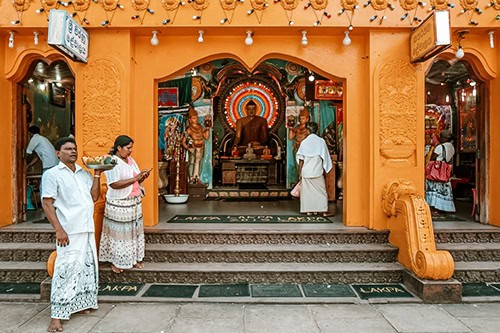
Offerings of fragrant incense and flowers with the chanting of verses as pilgrims break coconuts are common practices that appeal to the senses at Hindu temples, and the Ruhunu Maha Kataragama Devalaya is no exception. Located on the outskirts of Yala, this sacred site is dedicated to the Buddhist guardian deity, the Kataragama deviyo, who is also known as Murugan, the god of war in Hinduism.
Legend has it that this temple stands as a testament to the romance between Murugan and an indigenous princess named Valli. As the adopted daughter of a Vedda chief, Valli was devoted to Murugan and desired to become his wife—a fact that was noted by a sage during his travels. The sage conveyed Valli’s dedication to Murugan himself and described her beauty to the god, who instantly fell in love with her.
The story goes that the god then alighted from the heavens and took on the appearance of a handsome Vedda youth before proposing to Valli. The princess refused him several times, after which Murugan enlisted the help of his brother, who transformed into one of Valli’s greatest fears—an elephant. When Valli finally turned to Murugan for protection, he revealed his true form to her and made her his wife.
Historical records have also revealed that King Dutugemunu (161-137 BC) is credited for the restoration of the temple, as he was grateful to Murugan for aiding him in his battle to reclaim his kingdom from the Chola invaders. That being said, the temple’s structure is believed to have existed many years before Dutugemunu’s reign.
Unlike most other Hindu temples, the Kataragama Devalaya is a rather humble structure. The Maha Devale (Great Temple) has four entrances that are guarded by different deities, and the image of Murugan in the form of a lance can be observed at the entrance whereas the interior is adorned with spiritual paintings.
The sanctum of this sacred site, which can only be accessed by its head priests, also contains a yantra—a sacred diagram of geometric shapes that aids in meditation. Very little is known about this relic, as it cannot be viewed by the general public, but the pilgrims who travel here wholeheartedly believe in its existence and loudly profess their devotion to Murugan regardless.
Since the Kataragama Devalaya is a part of the Kataragama Temple Complex, travellers may also stop by the nearby shrines that are dedicated to Ganesh, Shiva, Lakshmi, Saraswati and Vishnu. At the same time, they will witness a gathering of Buddhists, Hindus, Muslims, and the indigenous Vedda community in the complex, as pilgrims of different faiths unite to worship the gods.
The Kataragama Devalaya is best visited either in the early morning or the late evening to avoid the midday heat. Travellers Isle recommends stopping by during the Kataragama Esala Perahera that occurs between July and August. This nighttime procession features fire walkers, whip crackers, drummers and dancers who even commit acts of self-mortification to proclaim their religious devotion.
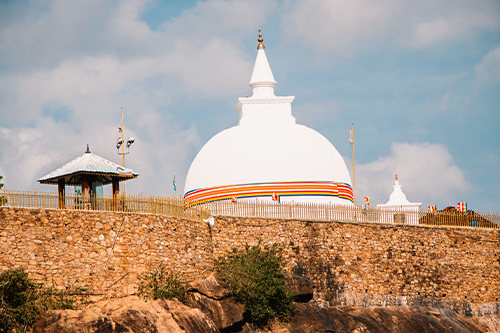
Atop a rocky outcrop that was once known as the Chiththala Pabbatha (Hill of the Quiet Mind) lies the ancient monastery of Situlpawwa, where Buddhist devotees gather for spiritual reflection in a setting that overlooks the lush greenery of the Yala National Park. With the promise of breathtaking views at the summit, the Situlpawwa Rock Temple stands as a testament to Sri Lanka’s Buddhist heritage, making it a popular tourist attraction.
According to an ancient chronicle titled the Mahavamsa, the many caves of this monastic complex once housed over 12,000 monks in the 1st century BC, and it is on these sacred grounds that a monk by the name of Tissa was able to reach arhat (sainthood). The surrounding stupas are also historically significant as their construction is credited to several kings including King Kavantissa, who may have built the Maha Situlpawwa stupa in the 2nd century BC.
Apart from its main stupa, the complex also has a reputation for its display of faded paintings from the Anuradhapura period, all of which depict the life of Lord Buddha and different scenes from Buddhist mythology. Moreover, one of the cave temples in the vicinity contains a majestic 8-metre-long sculpture of the Buddha in a reclining position. Several smaller statues also remain encased in glass, with the tranquility of the entire area evoking a sense of wonder from all visitors.
Additionally, plenty of Buddha statues and image houses are scattered around Situlpawwa along with several stone tablets that contain inscriptions in ancient Sinhalese. While these provide insight into the evolution of the language, they also carry information about the temple’s rich history.
The journey to Situlpawwa involves a short hike to the top, during which travellers must climb both a rocky slope and a steep stairway before arriving at the summit. Due to this, all travellers are advised to wear suitable footwear, and to time their excursion for either the early morning or the late afternoon, since the heat in the region becomes unbearable by midday.
Moreover, Situlpawwa is best experienced with a knowledgeable guide, who will be able to tell you about the structures inside and their significance to Buddhism. As this is a sacred site, all visitors must comply with the temple dress code by covering their bare arms, shoulders and knees to gain entry.
Please keep in mind that you will be asked to remove your footwear before you enter the stupa. Travellers are advised to carry their shoes afterward to avoid having them snatched by the monkeys that roam the complex.
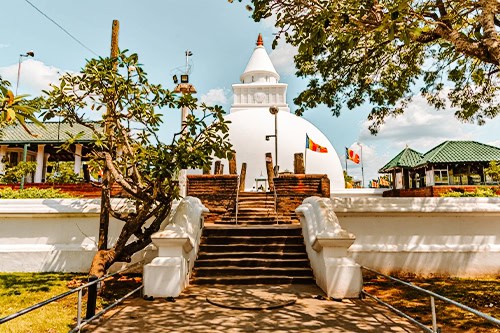
Situated a few metres away from the Kataragama Devalaya is the Kiri Vehera (Milk Stupa)—a sacred site that gets its name from its milky-white hue, and which showcases the coexistence of the island’s Buddhist and Hindu communities. Many devotees travel from afar to offer flowers and light oil lamps for blessings on this holy ground, which forms a part of the 16 sites that were visited by Gautama Buddha.
Historical records have revealed that the stupa was renovated by King Mahasen after Lord Buddha’s visit to the island. The story goes that Mahasen listened to the Buddha’s teachings and entered the first of the four stages of enlightenment, after which he sacrificed all worldly pleasures. The Buddha then provided the king with a lock of his hair and the sword that was used to cut it, which Mahasen proceeded to preserve within the stupa.
While the Kiri Vehera’s features are fewer in number, many are drawn to the statue of Avalokiteshvara, the Bodhisattva of infinite compassion, that marks the entrance of the shrine. This serves as a reminder of the Bodhisattva’s empathy, which prompted him to postpone his Buddhahood until he had helped every earthly being obtain liberation from suffering as well as the cycle of death and rebirth.
Moreover, a tree grown from one of the first saplings of the sacred Bodhi tree at Anuradhapura lies behind the stupa. This too, is venerated by the Buddhist devotees.
Although there is no entrance fee for this religious site, all travellers must comply with the temple dress code by concealing their bare arms, shoulders and knees to access the Kiri Vehera stupa and its surroundings. Travellers Isle recommends visiting this temple in the early morning or the late afternoon to avoid the midday heat.
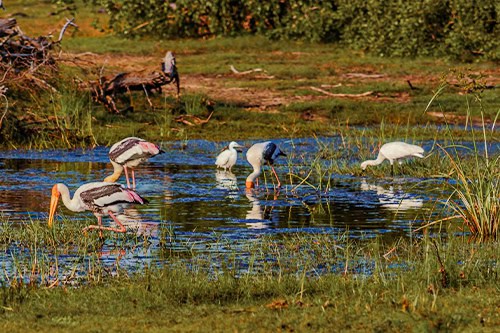
Roughly 200 species of birds are scattered around the park, and some of its popular endemic varieties include painted storks, spot-billed pelicans, jungle fowls, and blue-faced malkohas. On the other hand, the migratory greater flamingos flock in swarms of thousands by December, travelling from the Rann of Kutch that lies between India and Pakistan. Other migratory birds include sandpipers, lesser sand plovers, forest wagtails, black-tailed godwits, and many more.
However, its birdlife is not everything that Bundala has to offer, as it is home to various mammals and reptiles too. Travellers may encounter elephants, spotted deer, toque macaques, porcupines, flying snakes, pythons, and plenty of other critters during their adventure.
Interestingly enough, Bundala is also a site of interest for history buffs, as fossils from the Stone Age have been uncovered within the Pathiraja area of the park. Notably, the layers of soil in this area are between 64,000 to 74,000 years old, and the tools found in the area seem to suggest that it was once a human settlement.
The season for birdwatching in Bundala extends from mid-December to mid-April, as this is when its migratory birds alight from as far as Siberia to experience Sri Lanka’s warmer temperatures. Most travellers opt for a short 4-hour jeep safari, but birdwatching enthusiasts may select a 7-hour tour if they have ample time to spare.
That being said, the best of Bundala’s birdlife is spotted during its early morning safaris, which may be scheduled for as early as 5AM. This marks the time in which most of its birds and mammals come out of hiding and roam in search of food, and visitors may also witness the breathtaking beauty of the sunrise from their jeeps before continuing their expedition.
Frequently Asked Questions
1. Why is Yala famous?
As one of Sri Lanka’s most popular tourist attractions, Yala gets its fame from its vast wilderness that shelters all kinds of flora and fauna, and, to a lesser extent, it is also known for the few sacred sites in its vicinity. Collectively, Yala’s activities encourage travellers to unwind in nature while bearing witness to the religious devotion of the local community.
The Yala National Park is the region’s main attraction with a reputation for its leopard population. As the second-largest national park on the island, Yala is home to about 60 to 70 leopards, and so, the chances of encountering these elusive predators during a jeep safari are high. Despite this, leopard sightings are not guaranteed, but visitors will still be able to spot other bird and mammal varieties in the wild, and this has cemented Yala’s status as Sri Lanka’s most popular national park.
Additionally, the region benefits from its closeness to the Bundala National Park, where swarms of migratory and endemic birds gather to nest in the wetlands of this sanctuary. While Bundala is recognized as a birdwatcher’s paradise, it was also the first of Sri Lanka’s wetlands to be declared a Ramsar site, making it one of the must-sees when touring the isle.
That being said, the religious sites that lie in and around Yala also contribute to its popularity. Both locals and tourists alike are fascinated by the serenity of the Situlpawwa Rock Temple, which was supposedly built by flattening a rocky outcrop. The stupas and ruins of this site reflect the faith of the Sinhalese kings who were devout followers of Buddhism.
The Kataragama Temple and the adjoining Kiri Vehera stupa are also a testament to the devotion of these ancient kings, and they highlight the long-standing relationship between Buddhism and Hinduism. Journeying to these sites guarantees a greater insight into the island’s religious heritage, and travellers may find themselves feeling inspired by the spirituality of the local community.
All in all, Yala’s attractions have influenced its popularity, and they have established the region’s status as one of the essential destinations to visit when touring Sri Lanka.
2. How long to spend in Yala?
At most, you will need 1 night (2 days) in Yala to enjoy its attractions at a leisurely pace. If you have ample time to spare, you may even extend your stay by an extra day. However, Travellers Isle recommends against spending too much time in Yala as there are plenty of other things to see and do during your visit to Sri Lanka.
3. When to visit Yala?
The best time to visit Yala extends from mid-December to mid-April as well as both July and August. This is because the possibility of experiencing heavy rainfall during these months is significantly less, and these periods of dry weather will also increase your chances of spotting more animals in the wild.
That being said, if you wish to experience the famed Kataragama Esala Perahera during your stay, you will have to consult your tour provider or check the dates of this festival online, as it may occur in either July or August.
Moreover, travellers are advised against visiting Yala from September to November, as this is when Block 1 of the Yala National Park is closed to the public.
4. Are there beaches in Yala?
Yes, there are. Yala Beach forms a part of the Yala National Park, and it is a road less travelled by locals and tourists alike. This is because there is very little to see and do here, and the only activity on these shores comes from the fishermen in the area as they prepare their boats to reel in their catch of the day. Visitors are advised against swimming in these rough waters which pose a threat to one’s safety.
Alternatively, Kirinda Beach lies a short distance away from Yala in the town of Kirinda, which is often used as a base for tours in the region. Booking your accommodation at one of its seaside hotels will give you access to the beach which boasts of pristine, golden sands and sparkling waters. However, much like Yala Beach, the waves here are too rough for swimming, so most travellers opt for a stroll along the shoreline to enjoy the beachscape instead.
More Tips for Your Holiday
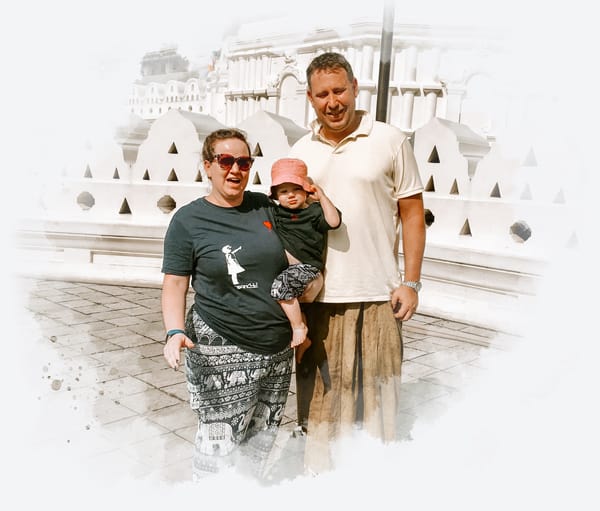
"We have had our amazing driver taking us around Sri Lanka with our 15 month old daughter for the last two weeks. Everything has been organized for us and everything has been perfect.Anyone thinking about going to Sri Lanka with their little ones should book with Travellers Isle. Nothing has been too much trouble for them. All hotels have been fabulous and our driver has been so helpful, amazing with our daughter, professional and knowledgeable."
